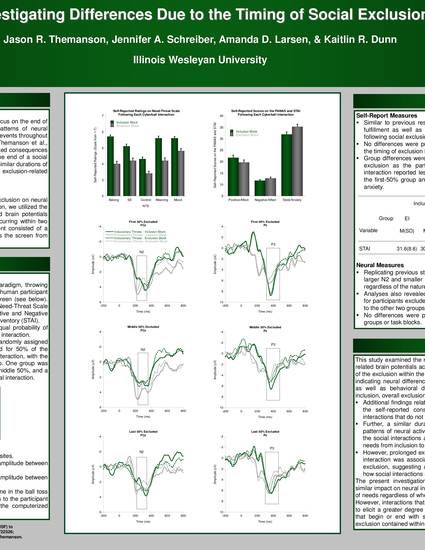
Social Exclusion When examining social exclusion, researchers typically focus on the end of the interaction. However, recent research examining patterns of neural activation during social interactions indicates that specific events throughout an interaction are related to perceptions of exclusion (Themanson et al., 2013). This leaves open the possibility that exclusion-related consequences may be present even if someone was fully included at the end of a social interaction. To address this issue, we varied the timing of similar durations of exclusion within social interactions to see the effects on exclusion-related neural activity and self-reported feeling states. Current Study To examine the potential impact of the timing of social exclusion on neural and self-reported indices of the consequences of exclusion, we utilized the Cyberball paradigm to assess participants’ event-related brain potentials (ERPs) to both inclusionary and exclusionary events occurring within two social interaction blocks (inclusion, exclusion). Each event consisted of a series of throw frames that showed a ball moving across the screen from player to player.
Available at: http://works.bepress.com/jason_themanson/25/
